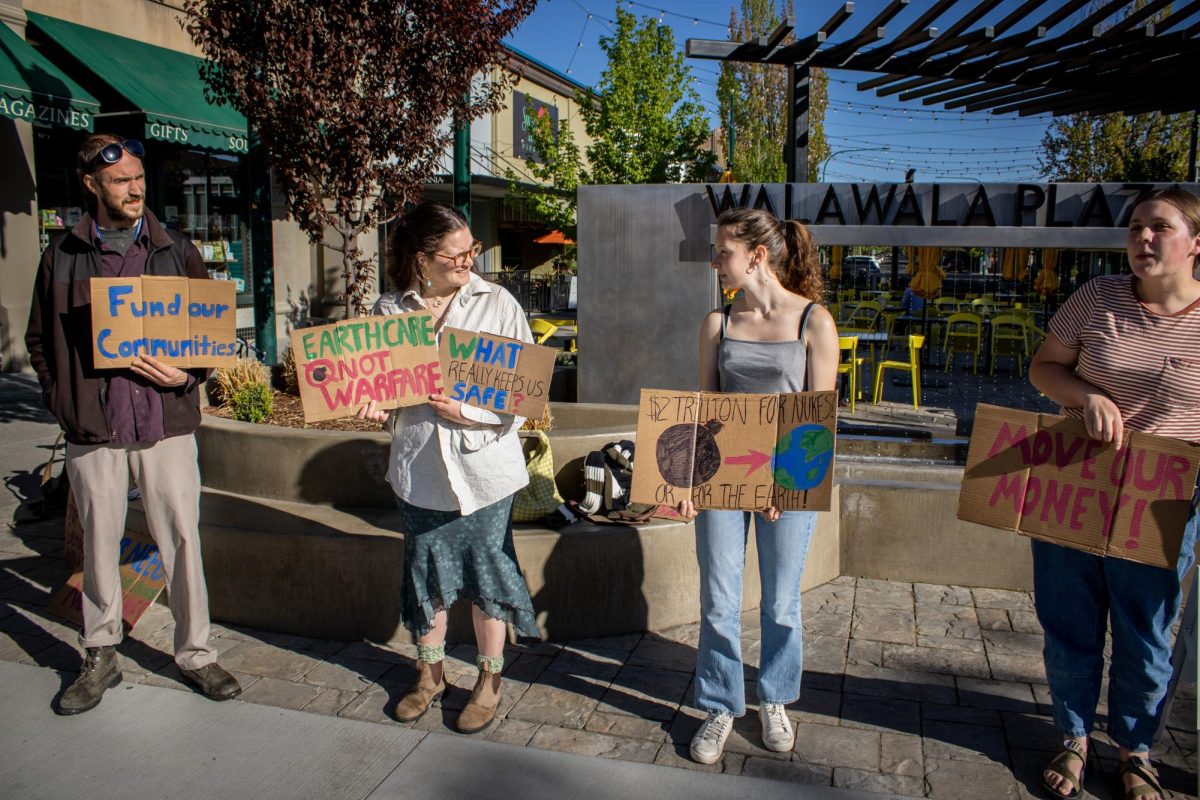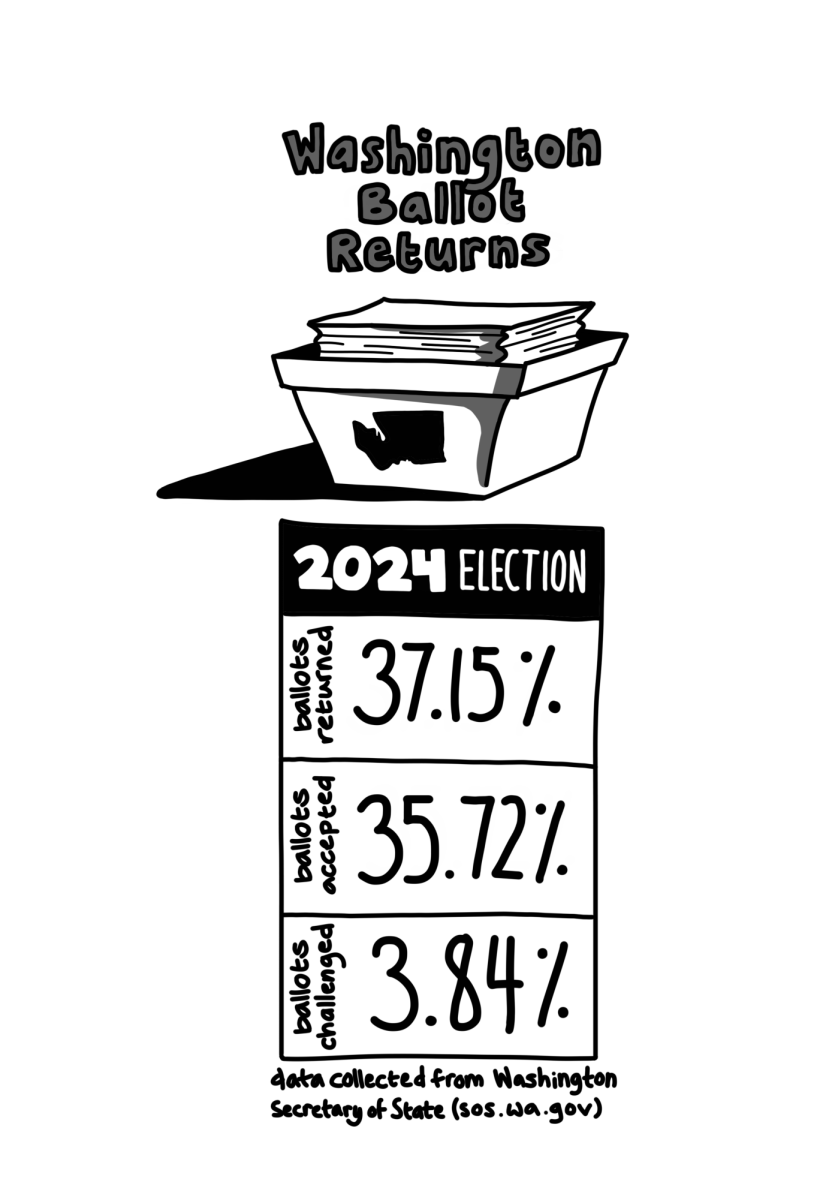It took overcoming many hurdles for the Wal-Mart Corporation to open its store in College Place in 2001 after first expressing interest in 1994. With the support of the city government, and in opposition to local retailers and citizens groups, Wal-Mart has become part of the College Place landscape and was expanded in 2005.
The key to Wal-Mart’s success is described by first-year JJ Ooi. “You can find literally anything in there. It’s cheaper, convenient, and has a large variety of merchandise,” Ooi wrote in an e-mail.
Garett, a first-year, has shopped at the College Place Wal-Mart only once. Garett was looking for decorations for his fraternity house.
“We tried going elsewhere but trying to buy X-mas lights in February is tough, Wal-Mart was the only store that had some in stock,” he said.
The Wal-Mart Corporation runs 6,775 stores in 16 countries. The company is the biggest retailer in the United States, Canada and Mexico with the $315 billion revenue in 2006. Wal-Mart stores take pride in their low prices and a large assortment of merchandise.
The company has come under criticism for its labor and competition practices. Wal-Mart executives have gone on the record with strong anti-union statements and policies.
Other criticism stems from the practices of the company’s suppliers. More than 61,000 companies in the United States alone provide merchandise to the retailer.
In late February Fair Trade Campaign, a social justice and labor rights group affiliated with the Campus Greens, hosted representatives of worker groups in Colombia, India and Wal-Mart employees in Florida.
“People know that Wal-Mart is bad, but finding out specifics can still be eye-opening,” said Chloe Tirabasso, member of the Fair Trade Campaign, commenting on the response to the presentation from Whitman students.
The presenters accused Wal-Mart of underpaying and mistreating its retail employees and disregarding worker abuse by the suppliers overseas.
Other critics point out the company’s retail practices. Wal-Mart stores are usually placed close to major traffic veins and require large parking spaces for their costumers.
The College Place Wal-Mart store was constructed on a previously undeveloped property between College Avenue and Larch Street in southern College Place. The original development proposal called for closing access to State Route 12 from both streets and construction of a new crossroad.
A citizens group called foul on the basis that the proposed street would in effect pass through the store’s parking lot and facilitate access to the store. Further concerns included investments by the City of College Place in the road alterations. Blue Mountain Audubon Society questioned the environmental impact of the development.
The City Council of College Place welcomed the arrival of the retailer. “College Place receives about one-third the real estate tax revenue of the average like-size Washington city,” wrote Thor Bakland, the city mayor at the time, in letter in support of Wal-Mart, dated Dec. 8, 1997.
“To ensure that our citizens receive adequate public services, we must develop a commercial base for tax revenue,” Bakland wrote in the same letter.
The new access point to the Highway 12 was eventually constructed, but only one of the pre-existing ways, Larch Street, was cut off.
Wal-Mart aggressively addresses these and other criticisms of the company. A Web site dedicated to facts and figures about company highlights its efforts towards sustainability and social responsibility.
The company views its sheer size and economic influence as a major tool in ameliorating many of the problems related to its impacts on the environment, costumers and employees.
“Folks in Wal-Mart believe that the company can make the world a better place. Historically it was low prices,” said Scot Case in a phone interview from his Pennsylvania office. Case is a consultant advising companies on changing and improving their environmental practices and helped Wal-Mart design its environmental strategy.
“Now they are so big that their actions can have huge impact,” added Case.
For example, a decision to prohibit drivers from idling the distribution trucks would save 10 million gallons of gas a year, according to an informational video on the company’s web site. The practice change would also reduce the Wal-Mart’s emissions of carbon dioxide by 100,000 tons.
Consumer pressure is not the only factors pushing for environmental improvements of the company’s performance. Wal-Mart took heavy losses during Hurricane Katrina.
“Wal-Mart realizes that this is a biggie. Global warming is destroying business,” said Case.
Increasingly efficient practices benefit the corporation both directly and indirectly. More efficient stores save energy costs upfront, but energy saving appliances can give savings to the consumers. Case estimates that the costumers save about $30 to $40 per each compact fluorescent light bulb. These savings translate to extra money to be spent on other purchases at the Wal-Mart stores.







